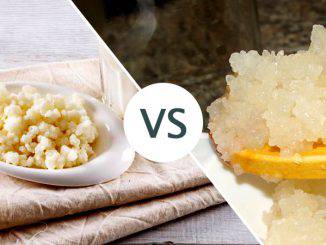
Probiotics
According to the National Library of Medicine, “The term “probiotic” was first used in 1965 to describe substances secreted by one organism which stimulate the growth of another.” They also add that “the introduction of beneficial bacterial species (probiotics) to gastrointestinal tract may be a desirable option to re-establish the microbial equilibrium and prevent disease.”
The human microbiome consists of many different microorganisms, including good and bad bacteria, viruses, fungi, etc.
Probiotics are live microorganisms that, when administered in adequate amounts, confer a health benefit on the host
To cut a long story short, we call probiotics the good bacteria that are our natural and constant companions in our struggle to be healthy, vital, and live longer.
These invisible to the naked eye health assistants are a significant part of our bodies. Their vital role is to counterbalance the adverse effects of the potentially harmful microorganisms surrounding us.
When an imbalance between the beneficial and the harmful bacteria in the microbiome occurs, a series of disease processes may kick in.
This imbalance in the microbiome has various manifestations, often remaining unnoticed in the frenetic daily life of modern man: bloating and heaviness in the abdomen, indigestion, irregular bowel movements (constipation), or diarrhea. These are the symptoms many serious gastrointestinal diseases usually start with.
Our diet has a significant impact on the composition of the intestinal microbiota, and if we want to keep it healthy, we can help by taking probiotic bacteria.
The best source of probiotics are fermented foods such as Kefir, yogurt, sauerkraut etc.
Prebiotics
Prebiotics are a non-digestible component of food that stimulates the growth and activity of other microorganisms in the gut, thus improving the host’s health, in our case – the human.
Therefore, prebiotics may be considered the food for the probiotics and are their vital support.
The key aspect of a prebiotic is that it is not digestible by the host and leads to health benefits through the support it provides to probiotics.
In other words, the most important characteristic of prebiotics is that they can only be metabolized by specific microorganisms – the probiotic microorganisms – for which they are the food.
All prebiotics are fiber, but not all fibers are prebiotics. Fibers are considered a prebiotic only if gastric enzymes cannot break them down and are not absorbed in the intestines.
To cut a long story short: prebiotics are the food of probiotics.
These indigestible fibers are found in certain foods such as onions, garlic, asparagus, green banana, chicory, or supplements that play a useful role in shaping intestinal probiotics.
But let’s go back to the National Library of Medicine, where we can read that “Prebiotic is a non-digestible food ingredient that confers benefits on the host by selectively stimulating one bacterium or a group of bacteria in the colon with probiotic properties. Both probiotics and prebiotics are together called Synbiotics.”
And here comes another term: synbiotics.
Synbiotics
Synbiotics are a combination of probiotics (the good bacteria) and prebiotics (the food of probiotics).
In other words, both probiotics and prebiotics are together called Synbiotics.
Synbiotics are becoming increasingly popular because prebiotic fibers stimulate different strains of good bacteria in the gut. This means that prebiotics boosts the probiotics and increase their potential to change the gut’s microbiota.
The combination of probiotics and prebiotics increases the benefits of probiotics that maintain and restores the optimal balance of the intestinal microbial population.
But let’s recall what Kefir is. As we said in the article “What is Kefir?” the Kefir grains are called a SCOBY, an abbreviation for “Symbiotic Culture of Bacteria and Yeast”.
And here comes the real clue:
The different types of Kefir are actually colonies of beneficial probiotics, combined with prebiotics, forming together harmonious and stable symbiotic structures.
A needed clarification
You may have noticed that we used two slightly different terms here: “symbiotic” and “synbiotic”.
The terms “symbiotic” and “synbiotic” are not the same.
“Symbiotic” is a broader term used in biology that refers to an ecological relationship in which one organism (the symbiont) lives in a long-term relationship in a natural ecosystem with another organism (the host). That’s called a “symbiosis”.
On the other hand, the term “synbiosis” is narrower and is used mainly in a microbial context.
However, although these terms refer to different contexts, they are both related to the same phenomena in which two or more organisms live in a mutually beneficial relationship.



